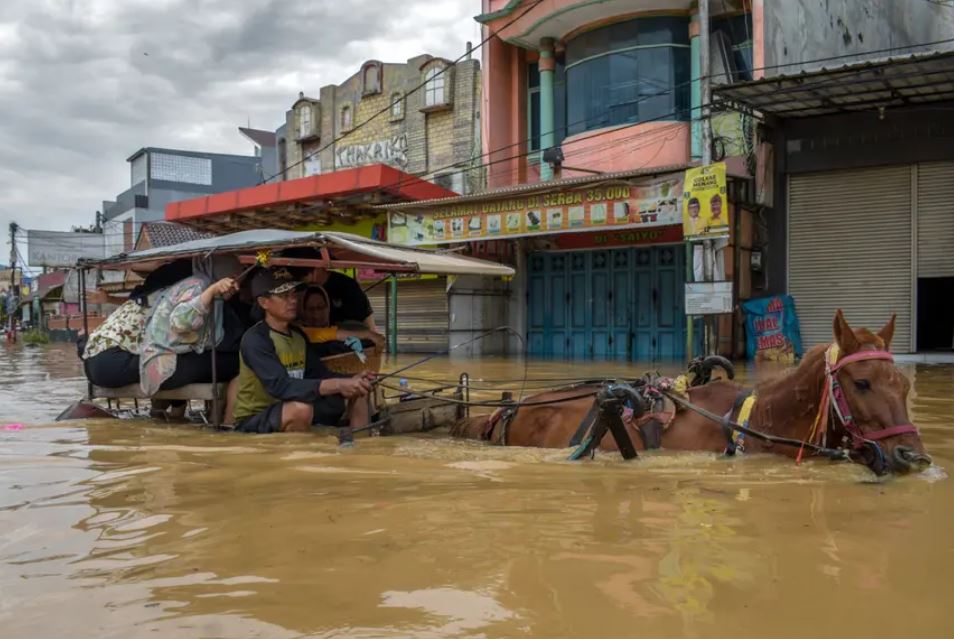The impacts of Natural hazards in 2024. The hottest year ever with more and more frequent disasters
In the last month of the hottest year on record, data released indicated that in the first 11 months of the year, more than 100 climate disasters occurred, resulting in approximately 200,000 deaths and 117 million people displaced worldwide.

Climate change is one of the world’s biggest concerns today. It has been the subject of international conferences and debates among world leaders over the past few decades, but 2024 was the hottest year on record: global warming is now a reality and no corner of the planet is immune. Natural disasters are becoming more intense and more frequent around the world, leaving already vulnerable regions exposed to greater risk of climate disasters. Tornadoes in the United States, floods in the Middle East, Asia and the Western Pacific, and heatwaves and fires in Europe are just some of the calamities that have claimed the lives of thousands of people over the past 12 months.
The World Meteorological Organization has concluded that this was the hottest year on record. In the first nine months of 2024, the average temperature was more than 1.5 degrees Celsius above pre-industrial levels.
The global average temperature “exceeded anything ever recorded, and often by a large margin,” the organization said in its ” State of the Climate ” report, which warns of the risk that climate change will make extreme and deadly weather events more common and intense.
Alongside these constant warnings and events that have devastated some regions of the world throughout the year, the so-called “petro-state” Azerbaijan hosted the United Nations Climate Change Conference – a country that was once the epicentre of oil production. Among the criticisms of COP 29, which took place in November this year and after records of hundreds of climate disasters, the most notable were the admittedly insufficient financial commitments and the targets for the phasing out of fossil fuels.
With the energy transition still slowly progressing, the consequences have been devastating. In the hottest year on record, millions of people have been exposed to multiple weather events. While the scientific community says that a single year with warming of more than 1.5°C does not constitute a failure to meet the stated Paris climate targets, the trend of rising temperatures shows no sign of stopping.
January
2024 promised high temperatures from the start and would break all records, with the hottest January ever across the world.
Also this month, Southeast Asia faced heavy rains that caused devastating floods, affecting countries such as Indonesia and Malaysia.
And a little further south, Cyclone Ellie brought torrential rains and floods to Australian territory.
February
Winter became harsher in the Americas. The United States and Canada faced winter storms, leaving entire cities without access due to snow and intense cold, which caused several damages and deaths. In Peru, many communities were affected by heavy rains, floods and consequent landslides.
On the other side of the planet, February rains failed to arrive and South Africa was hit by a months-long drought. Corn crops dried up and most livestock died. About 27 million people, many already on the brink of starvation, did not have enough food. The drought was caused by the natural climate cycle known as El Niño, which was compounded by rising temperatures.
March
The air and oceans were already experiencing record heat. And in March, the global average sea surface temperature spiked to 21.07 degrees Celsius, or nearly 70 degrees Fahrenheit — a phenomenon that triggered mass bleaching on Australia’s Great Barrier Reef , home to 400 types of coral that feed thousands of species of fish. It was the fourth and largest bleaching event on record.
The heat continued on the African continent, with prolonged drought in countries such as Ethiopia, Kenya and Somalia. Millions of people in the Horn of Africa were once again at risk of food insecurity.
April
In the middle of spring in the Northern Hemisphere, the world experienced the hottest April on record. A wave of heat spread across southern and southeastern Asia, with temperatures exceeding 45ºC for several days. Abnormally high temperatures for the season caused thousands of deaths, power outages and schools to close in Bangladesh, Pakistan, India and the Philippines.
At the end of the month, and lasting for weeks, Brazil suffered one of the country’s worst climate disasters. In several cities, between April 27 and May 2, it rained between 500 and 700 millimetres, corresponding to a third of the historical average rainfall for an entire year, and in many others the rainfall was between 300 and 400 mm between May 3 and 5. The rains that caused the major floods in Rio Grande do Sul affected more than 60 percent of the state’s territory and two million people. At least 170 people died in the more than 400 municipalities affected.
May
These floods in Brazil began at the beginning of May. On the other hand, the heat of the previous month in South Asia continued. Many areas of India experienced extreme temperatures in May, which threatened many agricultural workers.
Severe storms and flooding were also recorded in northern Europe, particularly in Germany. As rainfall levels had already been above average in previous months, the saturated soil was unable to absorb much of the rainwater and many rivers overflowed.
June
With temperatures at record highs, Brazil’s Pantanal has been hit by the worst forest fires in two decades, burning more than a million hectares. The fires are caused by deforestation and drought in Brazil, exacerbated by climate change, and have killed rare species of jaguars and parrots that live in the Pantanal, the largest tropical wetland in the world.
On the other side of the world, several countries along the Mediterranean were also battling major forest fires, which forced the evacuation of cities and the displacement of thousands of people in Greece, Turkey and Spain.
July
Hurricane Beryl hit Caribbean island states including Grenada, Jamaica and Saint Vincent and the Grenadines. Across the Pacific, torrential rains triggered major flooding and landslides, with dozens of deaths in southern China and Japan.
Meanwhile, Europe was experiencing yet another heatwave, with Spain and Italy recording record highs.
August
With temperatures 1.68ºC above the pre-industrial average in the middle of August, the northern hemisphere was experiencing its hottest summer on record – a phenomenon explained by a global heatwave.
The extreme heat worsened the drought situation and increased the risk of fires: European authorities joined forces to combat forest fires near the Greek capital and in a nature reserve near Rome. The island of Madeira also suffered from fires that burned more than five thousand hectares.
In August, scientists concluded that Europe is the continent that is warming the fastest due to climate change.
But the heat was also felt in South America. From August onwards, Brazilian biomes, including the Amazon, Cerrado and Pantanal, suffered from extreme droughts that favoured the spread of fires.
September
In September, devastating fires hit the northern and central regions of Portugal, resulting in at least nine deaths, including four firefighters. More than 135,000 hectares were consumed by the flames, leading the government to declare a “state of emergency” in the affected areas. More than 5,000 firefighters were mobilized, with support from European countries, to combat the fires.
In Africa, in countries such as Chad and Nigeria, where conflict has forced thousands to flee, massive floods have forced hundreds of thousands of people to relocate. These floods have destroyed acres of crops that are essential to the diet and economy of these populations.
In the United States, Hurricane Helene made landfall in the south of the country. Nearly 230 people died, making it the deadliest hurricane to hit the country since Katrina in 2005. Helene’s torrential rains caused massive damage and disruption in North Carolina, where major roads were washed away and critical infrastructure was destroyed.
October
The Isolated High Level Depression (DANA) was already expected in the Iberian Peninsula, but the storm that passed through the Spanish region of Valencia was devastating. In a deluge never seen in Spain, it rained for eight hours the amount of precipitation expected for a year. More than 200 people died, streets and houses were destroyed by flooding, some bridges were destroyed and thousands of cars piled up on roads, tunnels and garages.
November
As New York City issued a drought warning as the northeastern United States struggled to recover from an unusually dry fall season, the state was ravaged by wildfires. In a more common phenomenon on the other side of the world, Australia’s fire season started early due to prolonged drought
In the Atlantic, Storm Patty brought heavy rains that caused flooding and damage in the Azores and Madeira archipelagos. The Portuguese island regions faced significant challenges due to adverse weather conditions.
With winter approaching in the northern hemisphere, heavy rains affected France, Germany and the United Kingdom, causing new floods. In Southeast Asia, persistent rains worsened weather events in Vietnam and the Philippines, which were simultaneously affected by severe storms that forced thousands of people to evacuate.
December
Cyclone Chido devastated the French island of Mayotte. There were more than 30 victims in the country, which belongs to the French archipelago located in the Indian Ocean. It was the first time that France declared a day of national mourning due to a climate disaster.
In Mozambique, the same cyclone caused even more victims: at least 120 deaths. Cyclone Chido mainly hit the north and centre of the country, in particular the provinces of Cabo Delgado, Niassa, Nampula, Tete and Sofala. The provinces in the centre were the most affected.
In the last month of the hottest year on record, data released indicated that in the first 11 months of the year, more than 100 climate disasters occurred, resulting in approximately 200,000 deaths and 117 million people displaced worldwide.





